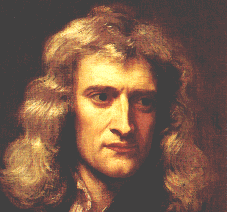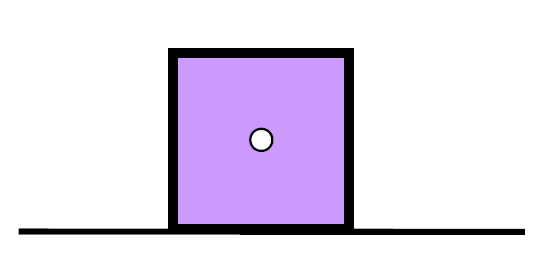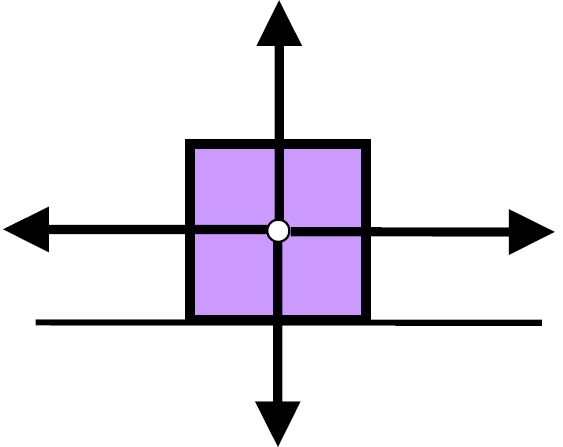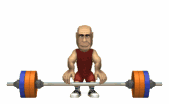![]()
![]()
DYNAMICS
Levitation Homopolar motor

A) 3 Laws of Motion
1st Law - Law of Inertia
If ΣFnet = 0, a = 0

Means Object at rest or ...
Constant Velocity
Explain this using Newton's 1st Law
(Flash) (HTML5) Inspired by Dr. Richard Feynman
Why doesn't the ball roll backward
after the cart stops and starts up again?
|
Notice that at the exact moment the ball reaches the front of the cart, the cart instantly moves ahead at the same velocity it had previously. Therefore the ball never actually comes to rest. It maintains its 'moving inertia'. If there had been even the smallest time interval between when the ball reached the front of the wagon and when the wagon began moving again we would have had different results. The ball would have bounced off the front of the wagon and when the wagon continued forward, the ball would then have rolled to the back of the wagon at an even faster rate. Observe the animation again, but this time follow the movement of the ball with a ruler and you will see that once the ball starts moving, it never really stops moving. |
Ex) Free body Diagram - Block being pulled to the right at constant velocity


A force is not required
to
MAINTAIN motion

A 5.0 kg box is moved across a floor with a horizontal F of 12 N. What is the force of friction on the box?
SF = ma = 0 = Fapp - f
0 = Fapp - f
0 = 12N - f
f = 12 N
![]()

![]()
"Difference between knowing something
and knowing the name of something"
Dr. Feynman, Inertia and Fathers
ŠTony Mangiacapre., - All Rights
Reserved [Home]
Established 1995
Use
any material on this site (w/ attribution)